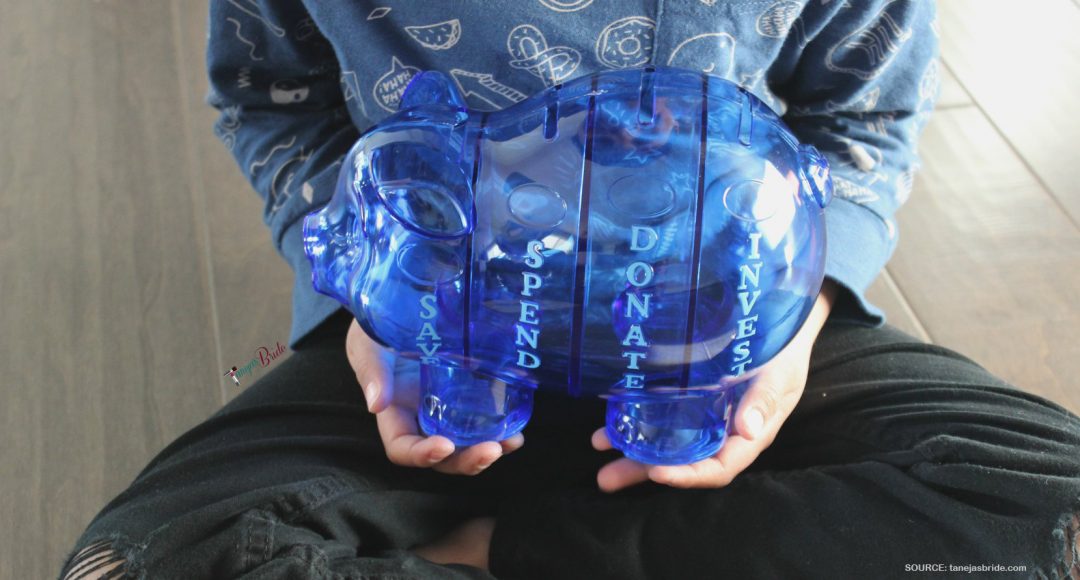
Recently a parent who is using our Money Savvy Pig bank asked me how to teach her young son how to use the “invest“ slot of the bank. He (and mom) were confused about how to approach investing as a money choice.
Before “invest” – start with “save”
Before you teach your child the concept of “invest”, first your child needs to understand and master the concept of save. We save and set goals for the things we want or need within, let’s say one year from now. So, if you are a 7-year-old kid, that would be something they would want or need by the time they are eight. Or, if it’s easier, if they are in first grade, by the time they are in second grade.
TIME is HARD for kids at a young age to grasp. A week can feel like a year.
Make the wait easier by making time specific by using the age or grade example above. Then, help them realize the goal. For every penny they save, match that penny. Work out a plan for them to earn some money. A chore young kids love is making sure all lights are out in empty rooms to save money on the family electric bill. As long as they are tall enough to reach that switch, it works!
You set the amount they earn for taking on this job within the family. Just make sure the “job” is a real job so it sends the message that you get paid for your work. And make sure the job is something they can accomplish. It needs to be age-appropriate. The point is for your child to succeed and earn money towards their goal – and realize the goal – and then start saving again for a new goal.
Why? Because success breeds success which builds a habit of saving and as a result, delaying gratification.
Investing is not just about the stock market
Once “saving” money is mastered, then you are ready to introduce the concept of investing your money. Explain that you invest and set a goal for the things you want in perhaps ten years or so. So, if you are 7, what would you want or need in ten years? A car? A college education? A computer? A special camp?
Ten years is a LONG time for kids – I know. But, it’s also a long time for adults. So the time to learn to accumulate and invest is when kids are young – so they understand the difference between short-term saving and long-term investing.
Putting money in the “invest” slot can also be used to invest in yourself. Possibly your child wants to start a business – like a lemonade stand. Taking invest money to buy supplies and then placing the profit back in the invest chamber is a great way to grow invest money. It encourages your child to leave it to grow over a longer period of time. It makes the invest money more active. Once a child sees how they can make the invest money grow, they are more likely to want to use that money choice.
Introduce the stock market – and its risks
Around third grade you can also use your child’s invest money to teach them how to invest in the stock market by owning a share of stock. Owning a share of stock means you own a piece of a company. If the company does well, so do you. If the company does not do well, you could lose some of your money or “investment”. That’s the risk of owning stock.
Introduce your child to this process by buying a stock “virtually”. Pick a stock and pretend to buy it. Then weekly, sit down and take a look at how that stock is doing. Discuss why it is doing well or not so well. Use the internet to gather information.
Grandparents are great resources
Finally, grandparents are a great resource when it comes to teaching your kids about investing. Grandparents can match or contribute to invest goals as well as tell stories about what they invested their money to achieve. Real-life examples of when investing worked – and when it did not – are very helpful to encourage a child to put some money towards investing.
Many people shake their heads at me for putting the “invest” slot on the Money Savvy Pig bank. But I was adamant that it needed to be there. Understanding how to invest is what will ultimately help your money to grow significantly. Just saving is not enough. The earlier your child learns this – the more likely they are to invest.





Leave a Comment